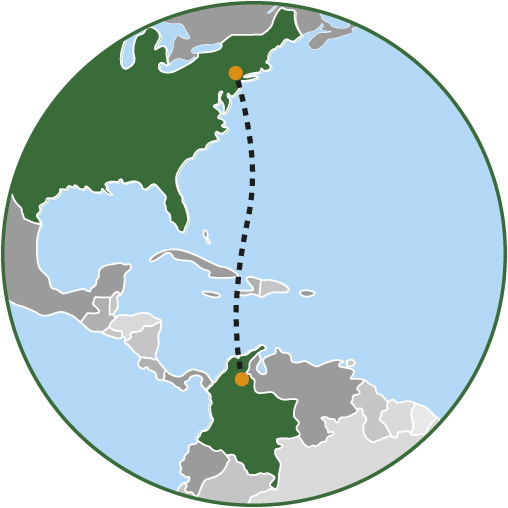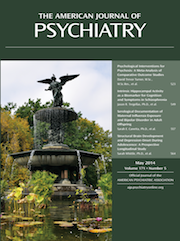“Luis,” a 21-year-old, single, Catholic, mestizo man, born in Colombia, oldest of three children, arrived in the United States at age 13 and was now a college sophomore living with his family. He complained of feeling “not too good, nervous, confused,” feeling increasingly “shy,” and having sleep problems and difficulties concentrating. He reported nightmares, headaches, chest pain (as if having a “heart attack”), tiredness, and “crying easily” when listening to song lyrics or watching movies. He thought of talking with a friend, a priest, a teacher, or his mother, but ultimately he decided to see a curandero (healer). He visited him twice, and was told he had mal de ojo (evil eye) caused by envious classmates and that his maternal grandmother’s soul was “demanding care and attention.” He felt guilty but only partially believed the explanations and never went back. His primary care physician prescribed a benzodiazepine, but he was reluctant to take medications because of their “toxic effects.”
Luis’s emigration experience had been “painful.” The move to the United States seemed rather sudden to him, and the reason for it was never fully explained to him. Because he did not speak English, he was placed two grades behind, in 6th grade. His classmates, although mostly Latinos, bullied him constantly, laughing at his accent and his darker skin. He recounts feeling like crying and avoiding fights (which led to his being called a coward or “less than a man”), but he hid his bad experiences from his parents. Over time, his English and academic performance improved, but he made only a few friends. He dated mostly Latino girls, “even though my father told me that I should marry a gringa [American woman].” During their third year in the United States, Luis’s mother had a “terrible duelo [grieving period]” that lasted almost a year, as she couldn’t attend her mother’s funeral because of visa problems. A curandero visited her several times a week for 2 months to perform healing rituals, including singing and praying in Spanish and “other native languages.” His mother improved, but Luis felt that his grandmother’s death had a “big impact on everybody.”
Luis grew up feeling loved but “somewhat scared” by his father’s authoritarian style and both parents (particularly his mother) always talking of God’s punishing him if he “sinned.” His father, a foreman in construction, drank heavily on weekends and became verbally violent when intoxicated. Luis grew up thinking these behaviors were normal, but felt confused that his mother prayed the rosary continuously and went daily to mass, begging God to make her husband “good” and telling Luis not to be like his father. Although “not too religious,” Luis attended mass every Sunday with his mother (and still does), but he did not confess or take Holy Communion. In Colombia, he had a small circle of friends with whom he enjoyed telling jokes full of sexual innuendos. He remembers “walking … with our arms around our shoulders, not being afraid of being called gays, as would be the case here in the U.S.”
The initial interview was conducted in English by a non-Latino psychiatrist, with Luis occasionally using Spanish expressions. Luis was of average height, casually dressed, well oriented, and somewhat shy, and he spoke softly and respectfully, at times with a quivering voice. Many responses started with “I don’t know.” He became somewhat emotional when recalling the family’s reaction to his grandmother’s death and his mother’s subsequent prolonged luto (mourning). There was no evidence of psychosis; suicidal, homicidal, or violent thoughts; history of depersonalization; or phobic or obsessive-compulsive symptoms. Luis denied drug or alcohol abuse; he had tried marijuana a few times with no noticeable effects, and he rarely consumed alcohol. When asked about the causes of his problems, he answered both “God’s will” and “demons acting through others.” He “believed in God,” he said, “but not in miracles.” His cognitive performance was within normal limits. When asked what were his greatest strengths, he listed being a good listener, disciplined, hard-working, and a good son; his main weaknesses were “not having many friends” and “being depressed.”
The psychiatrist prescribed amitriptyline, to reach a dosage of 100 mg/day within 4 weeks. He did not initially suggest counseling or psychotherapy, as he did not yet appreciate the depth of Luis’s emotional problems. Luis experienced medication side effects almost immediately, leading to nonadherence, although he did settle on taking 50 mg at bedtime, which helped him sleep. Only then was he encouraged to see a counseling psychologist. The one he visited asked mostly questions about drug and alcohol use and then recommended thrice weekly “intensive psychodynamic psychotherapy” to uncover “a lot of hidden information.” Luis declined this treatment, as he could not afford it. His mother insisted that he see a curandero again, but although Luis “respected her opinion,” he was not sure it was “the right approach.”
Within the following 2 months, with his symptoms beginning to improve, Luis saw a priest, who made him “pray a lot.” Finally, a friend’s father invited him to attend meetings of a group of Latino young adults discussing “what it means to be a Latino in the U.S.” He felt that these meetings were very informative, and he developed good, friendly relationships with several group members. About 3 months after joining the group, he showed steady improvement that persisted over the following 18 months.
Discussion
Luis meets criteria for major depressive disorder with anxious distress of mild to moderate severity. His personal and family history may be sources of temperamental and genetic vulnerability without reaching personality disorder levels. Environmental risk factors include adverse early experiences (his father’s heavy drinking, the abrupt decision to emigrate).
The case includes several clinical features frequently seen in depressed Latino patients.
Somatization (or somatoform manifestations, grouped under somatic symptom disorder in DSM-5), is a complex phenomenon sometimes reported as the presenting complaint (
1,
2). In Luis’s case, headaches and chest pain were the main manifestations. Somatization may play a minimizing, defensive role against eventual negative reactions to threatening symptoms.
S
tigma about mental illness and psychiatric diagnoses in general is a powerful sociocultural feature among Latinos, particularly those of low socioeconomic status (
3). Patients experience it as guilt and shame, leading to social isolation, self-criticism, and low self-esteem. Acquaintances, coworkers, peers, and relatives may express overt condemnation, demeaning names, coldness, or cruel and intense bullying (
4). The effect of stigma was intensified in Luis’s case by a hostile acculturation process and a fragile, vulnerable temperament. Notably, Luis was bullied by other Latinos, perhaps driven by actual or perceived differences between first- and second-generation immigrants and fueled by the bullies’ own self-hatred (
5,
6).
Acculturation syndrome (now called acculturation difficulty, included among “other conditions that may be a focus of clinical attention”) entails anxiety and reiterated self-commiseration as prominent clinical manifestations (
7). In Luis’s case, it was complicated by the ambiguous meaning of his father’s message to “date a
gringa” and Luis’s implicit criticism of U.S. social formalities (i.e., nonacceptance of demonstrations of affection among males).
The role and impact of traditional healers in Latino populations are well known (
8). To their position of authority in highly hierarchical social groups, they add an aura of wisdom and charisma with associated “special powers” (communication with deities, use of strange languages, exotic rituals, and so on), which is enhanced by the religious fervor of people like Luis’s mother. Coexistence of traditional beliefs and adherence to mainstream religions such as Catholicism is the rule. The patient frequently found himself conflicted by his mother’s gospel-inspired convictions and his own rational analyses.
Patient-identified explanatory models or “causal attributions” represent a critical component of the cultural assessment of any case (
9); they uncover cultural beliefs, full of symbolic meanings, transmitted through generations, with highly persuasive impact. In Latino and Latin American culture, these are rich and complex: clinicians would do well to inquire about them systematically and consider them in open discussions with the patient (
10). Luis’s clinicians showed little understanding and did not attempt to “harmonize” the patient’s thoughts with scientifically valid views about the symptoms and their psychotherapeutic management. In some cases, these explanatory models are “idioms of distress,” that is, “ways of talking about suffering” among individuals of a cultural group, such as
“nervios” (mental distress) among Latinos (
11). They convey a wide range of discomfort, and discussing them may have an alleviating effect, a therapeutic objective in itself.
Finally, the biological aspects of diagnosis may have ethnic roots, as does the prediction of response to medications, as documented by pharmacogenomic profiles. Among Latinos, the predominant presence of a slow-metabolizer CYP-450 genotype (
12) may explain Luis’s early side effects and his better response to a reduced dosage of the tricyclic antidepressant.
The Cultural Formulation Interview in DSM-5 systematizes cultural information relevant to diagnosis, treatment, prognosis, and prevention (
13). It may be particularly useful when the patient’s and clinician’s ethnic and cultural backgrounds differ or when there is uncertainty about the meaning of culturally distinctive manifestations such as pain, symptom reporting, family atmosphere, religious factors, and so on. It is designed to define problems in cultural terms, explore self-coping and help-seeking patterns, and ultimately “enhance the cultural validity of diagnostic assessment, facilitate treatment planning, and promote the individual’s engagement and satisfaction” (DSM-5, p. 751). In Luis’s case, its use might have assisted the psychiatrist in obtaining a better understanding of the family and social environment (including notions of friendship, gender relationships, language, differences between first- and second-generation immigrants, and so on), making distinctions in the depression-anxiety equation, and rationally weighing the patient’s explanatory models and the healer’s interventions. There is little doubt that another powerful cultural feature, personal identity (
14), was retrieved in the process of the group meetings and that its reaffirmation may have had a markedly positive impact on Luis’s improvement.


